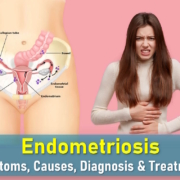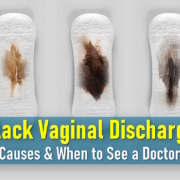Pelvic Inflammatory Disease (PID): Symptoms, Causes, and Treatment
What Is Pelvic Inflammatory Disease (PID)?
Pelvic inflammatory disease (PID) is an infection that affects the female reproductive system, including the uterus, fallopian tubes, and ovaries. It typically starts when bacteria from the vagina or cervix spread upward into these organs, leading to inflammation and potential damage. PID is primarily linked to sexually transmitted infections (STIs), particularly gonorrhea and chlamydia, and is considered one of the most severe consequences of untreated STDs. It predominantly affects sexually active women between the ages of 15 and 24, though it can occur in women of any age. If left untreated, PID can cause serious and sometimes irreversible complications, including chronic pelvic pain, ectopic pregnancy, and infertility, making it one of the leading causes of fertility issues in women.
The infection can occur in different parts of the reproductive system, including:
- Cervix (cervicitis)
- Uterine lining (endometritis)
- Fallopian tubes (salpingitis)
- Ovaries (oophoritis)
- Area surrounding the ovaries and tubes (tubo-ovarian abscess)
- A combination of the above
While PID is most commonly caused by STIs, it can also develop after gynecological procedures, childbirth, miscarriage, or the insertion of an intrauterine device (IUD). Because symptoms are often mild or absent, many women may not realize they have PID until complications arise, underscoring the importance of regular screenings and prompt treatment for sexually active individuals.
How Common Is Pelvic Inflammatory Disease (PID)?
Pelvic inflammatory disease is a significant health concern worldwide, especially among young women. In 2019, approximately 1.05 million women of reproductive age had active PID globally. In the United States, about 4.4% of sexually experienced women aged 18-44 report having been diagnosed with PID at some point in their lives, equating to roughly 2.5 million women.
While PID rates have declined over the past decade, it remains a frequent diagnosis in clinics and emergency rooms. Women between the ages of 15 and 25 are at the highest risk.
Pelvic Inflammatory Disease (PID) Risk Factors
Several factors significantly increase the likelihood of developing pelvic inflammatory disease:
- Sexual history: Having multiple or new sexual partners, or having a partner with multiple sexual partners
- STI exposure: A history of sexually transmitted infections (particularly chlamydia or gonorrhea) or previous PID episodes
- Age factors: Being under 25 and sexually active (highest risk group is 15-24 years old)
- Unprotected sex: Engaging in sexual activity without barrier protection
- Douching: This practice can push bacteria into the reproductive organs and mask PID symptoms while disrupting the natural vaginal flora
- Medical procedures: Recent gynecological procedures including IUD insertion (highest risk in first few weeks), abortion, or following unsafe birthing experiences
- Post-pregnancy complications: Infection following miscarriage or abortion
PID develops when the cervix is exposed to an STD and loses its natural protective ability against bacteria, allowing infection to spread to the uterus, ovaries, and fallopian tubes. The substantial risk from untreated chlamydia and gonorrhea (accounting for 90% of cases) underscores the importance of STI testing before IUD placement and regular sexual health screenings for sexually active individuals.
Pelvic Inflammatory Disease (PID) Symptoms
Recognizing pelvic inflammatory disease symptoms early can help prevent long-term damage to your reproductive health. PID symptoms can range from mild to severe, and in some cases (particularly with chlamydial infections), women may experience no symptoms at all – a condition sometimes called “silent PID.” However, even without noticeable symptoms, the infection can still cause serious complications like infertility or chronic pelvic pain.
Common PID Symptoms
- Pelvic or abdominal pain – Typically a dull pain in lower abdomen (more pronounced on one side in some cases) that may intensify as infection progresses
- Abnormal vaginal discharge – Often green or yellow with a distinct unpleasant odor; may become pus-like as infection worsens
- Irregular menstrual bleeding – Including heavier periods, spotting between cycles, or bleeding after intercourse
- Painful urination – Discomfort or burning sensation when urinating
- Pain during sex (dyspareunia) – Typically felt deep inside the pelvis
- Fever or chills – Usually mild at first (below 102°F/38.9°C) but may increase as infection progresses
- Lower back pain – Persistent ache in the lower back region
- Gastrointestinal symptoms – Including nausea, vomiting or diarrhea in some cases
When Symptoms Appear
Symptoms of PID typically emerge either:
- Toward the end of the menstrual period
- In the days immediately following menstruation
They may appear suddenly over a few days or develop gradually over several weeks. The severity often depends on the causative organism – gonorrhea infections typically cause more severe symptoms than chlamydia or Mycoplasma genitalium infections.
Important Warning
If you experience any PID symptoms, it’s crucial to:
- Stop having intercourse immediately to prevent spreading infection
- Seek medical attention as soon as possible
Early pelvic inflammatory disease treatment with appropriate antibiotics can help prevent permanent damage to your reproductive system. Left untreated, PID can lead to serious complications including ectopic pregnancy and infertility.
What Causes Pelvic Inflammatory Disease (PID)?
Pelvic inflammatory disease (PID) develops when bacteria migrate from the vagina or cervix upward into the uterus, fallopian tubes, or ovaries. This infection can cause serious damage to the reproductive system if left untreated.
Primary STI-Related Causes (85% of cases)
Most PID cases result from sexually transmitted infections acquired through intercourse with an infected partner. The primary bacterial culprits are Neisseria gonorrhoeae (causing gonorrhea) and Chlamydia trachomatis (causing chlamydia), which typically first infect the cervix (causing cervicitis) before ascending to upper reproductive organs. Without treatment, about 10% of chlamydia cases progress to PID, while gonorrhea infections lead to PID in approximately 40% of untreated cases. Gonorrhea-related PID tends to cause more severe symptoms, while chlamydia often results in milder or even silent infections where damage occurs without noticeable symptoms. Another emerging pathogen, Mycoplasma genitalium, is increasingly recognized as a PID contributor, often causing subtle symptoms.
Non-STI Causes (15% of cases)
About 15% of PID cases stem from bacteria not typically sexually transmitted. These include microorganisms associated with bacterial vaginosis (such as Bacteroides and Peptostreptococcus), which can disrupt the normal vaginal flora balance. Respiratory pathogens like Streptococcus pneumoniae and gastrointestinal bacteria including E. coli may also cause PID in some cases. Women with bacterial vaginosis have higher PID risk as the overgrowth of certain bacteria can spread to other reproductive organs. Even normally harmless vaginal bacteria may cause infection if they migrate upward when the body’s natural defenses are compromised.
Procedure-Related & Other Causes
PID can develop following medical events or procedures that allow bacteria to enter the upper reproductive tract. These include vaginal delivery, abortion, or miscarriage, where the protective barriers may be breached. Gynecological procedures such as IUD insertion (with risk highest in the first 3 weeks after placement), dilation and curettage (D&C), endometrial biopsy, or hysterosalpingography can occasionally introduce bacteria. Practices like douching significantly increase risk by disrupting normal vaginal flora and potentially pushing bacteria upward. The cervix is particularly vulnerable during menstruation when it’s more open, facilitating bacterial ascent. While these factors increase risk, PID can sometimes occur without any obvious cause when normal vaginal bacteria migrate upward unexpectedly.
How Do You Test for Pelvic Inflammatory Disease (PID)?
Diagnosing pelvic inflammatory disease involves a combination of tests, as symptoms can mimic other conditions like ectopic pregnancy. Common approaches include:
- Swab tests from the cervix or vagina to detect bacteria like chlamydia or gonorrhea.
- Urine tests, which sometimes replace swabs.
- Blood tests to check for signs of infection or inflammation.
- Ultrasound to visualize swollen fallopian tubes or abscesses.
In rare cases, a laparoscopy—a minor surgical procedure using a thin telescope—may be needed to confirm PID. However, this isn’t routine. Because PID symptoms can be subtle or absent, delays in diagnosis are common. A pregnancy test is also standard to rule out ectopic pregnancy, which shares symptoms like pelvic pain.
How Long Does It Take for PID to Develop?
PID can develop weeks or months after exposure to an STI. Bacteria may linger in the cervix without symptoms before migrating upward. This delayed onset underscores why regular STI testing is critical for sexually active women, especially those with new or multiple partners.
Pelvic Inflammatory Disease (PID) Treatment Options
When diagnosed with pelvic inflammatory disease, prompt antibiotic treatment is crucial to prevent complications. The standard approach involves a 14-day course of oral antibiotics, often combining two different types to target the various bacteria that can cause PID. In severe cases – such as when abscesses form or sepsis is suspected – hospitalization with intravenous antibiotics may be necessary.
What Antibiotics Treat Pelvic Inflammatory Disease (PID)?
Doctors typically prescribe antibiotic combinations that cover common PID-causing organisms like chlamydia and gonorrhea. Treatment often begins immediately upon suspicion of PID, even before test results return, because early intervention significantly reduces the risk of long-term reproductive damage. It’s absolutely essential to complete the entire antibiotic course, even if symptoms improve quickly.
When Is Surgery Needed for Pelvic Inflammatory Disease (PID)?
While most cases respond to medication, about 1 in 10 women may require surgical intervention, usually to drain a tubo-ovarian abscess. This is relatively uncommon but becomes necessary when antibiotics alone can’t resolve the infection.
Partner Treatment and Prevention
Effective pelvic inflammatory disease treatment must include addressing potential reinfection risks:
- Partner treatment: All sexual partners from the previous six months should be tested and treated, even if asymptomatic. This is critical because chlamydia (a common PID cause) often shows no symptoms in men but can still be transmitted.
- Abstinence during treatment: Avoid sexual activity until both partners complete their antibiotic courses to prevent ping-pong reinfection.
- Follow-up testing: Retesting about three months after treatment helps ensure the infection is fully cleared.
Potential Complications of Pelvic Inflammatory Disease (PID)
When treated early, most women recover completely. However, delayed treatment increases risks of serious reproductive health issues:
- Infertility: About 1 in 8 women with PID experience difficulty conceiving due to fallopian tube scarring. The risk jumps to 50% after three PID episodes.
- Ectopic pregnancy: Damaged tubes raise the risk of tubal pregnancies by 10-fold.
- Chronic pelvic pain: Persistent discomfort affects nearly 25% of PID patients.
- Abscess formation: Pockets of infection may require drainage.
- Pregnancy complications: Including higher risks of miscarriage and preterm birth.
Recurrent Pelvic Inflammatory Disease (PID)
About 20% of women experience repeat PID episodes, often within two years, due to:
- Incomplete partner treatment
- Antibiotic non-adherence
- New exposures without barrier protection
- Increased vulnerability after initial tube damage
The key to preventing complications lies in early detection, proper treatment, and addressing all potential infection sources. Women who’ve had PID should maintain regular gynecological follow-ups and practice safe sex to protect their reproductive health.
Preventing Pelvic Inflammatory Disease (PID)
The most effective way to prevent pelvic inflammatory disease is to reduce your risk of sexually transmitted infections. Key prevention strategies include:
- Consistent condom use: Proper condom use during every sexual encounter significantly lowers STI transmission risk.
- Regular STI testing: Annual chlamydia screening is recommended for sexually active women under 25, and after any new sexual partner.
- Mutual monogamy: Limiting sexual partners reduces exposure to potential infections.
- Avoiding douching: This disrupts the vagina’s natural protective bacteria.
- Prompt treatment: Seeking immediate care for any unusual vaginal symptoms or suspected STIs.
Many community health centers, Planned Parenthood clinics, and some pharmacies offer free, confidential STI testing. The process is simple – often just a urine test or self-collected vaginal swab – and doesn’t require a pelvic exam.
Frequently Asked Questions
Can men get pelvic inflammatory disease?
While pelvic inflammatory disease in men isn’t possible (as it specifically affects female reproductive organs), men can carry and transmit the bacterial infections that cause PID in women. Male partners should always be treated when PID is diagnosed.
Can you get PID without an STD?
Yes, about 15% of PID cases occur without an STD. These usually follow gynecological procedures, childbirth, or when normal vaginal bacteria spread to the upper reproductive tract.
How long after exposure does PID develop?
PID can develop weeks to months after bacterial exposure. The timeline varies based on the specific infection and individual factors.
What does PID discharge look like?
Pelvic inflammatory disease discharge often appears abnormal – possibly yellow or green, foul-smelling, or heavier than usual. However, some women notice no discharge changes.
Can PID go away on its own?
While mild cases might temporarily improve, the infection typically persists and can cause silent damage. Antibiotics are always necessary to properly treat PID and prevent complications.
Closing Thoughts
Pelvic inflammatory disease represents a serious but preventable threat to women’s reproductive health. By understanding the symptoms (like pelvic pain, abnormal discharge, or irregular bleeding), seeking prompt medical attention, and completing all prescribed treatments, most women can avoid long-term consequences. Remember that safe sex practices and regular STI screenings offer the best protection against PID. If you’ve had PID before, be especially vigilant about symptoms and follow-up care, as recurrence can compound risks to fertility. Your healthcare provider can offer personalized guidance to maintain your gynecological health and address any concerns about pelvic inflammatory disease.










